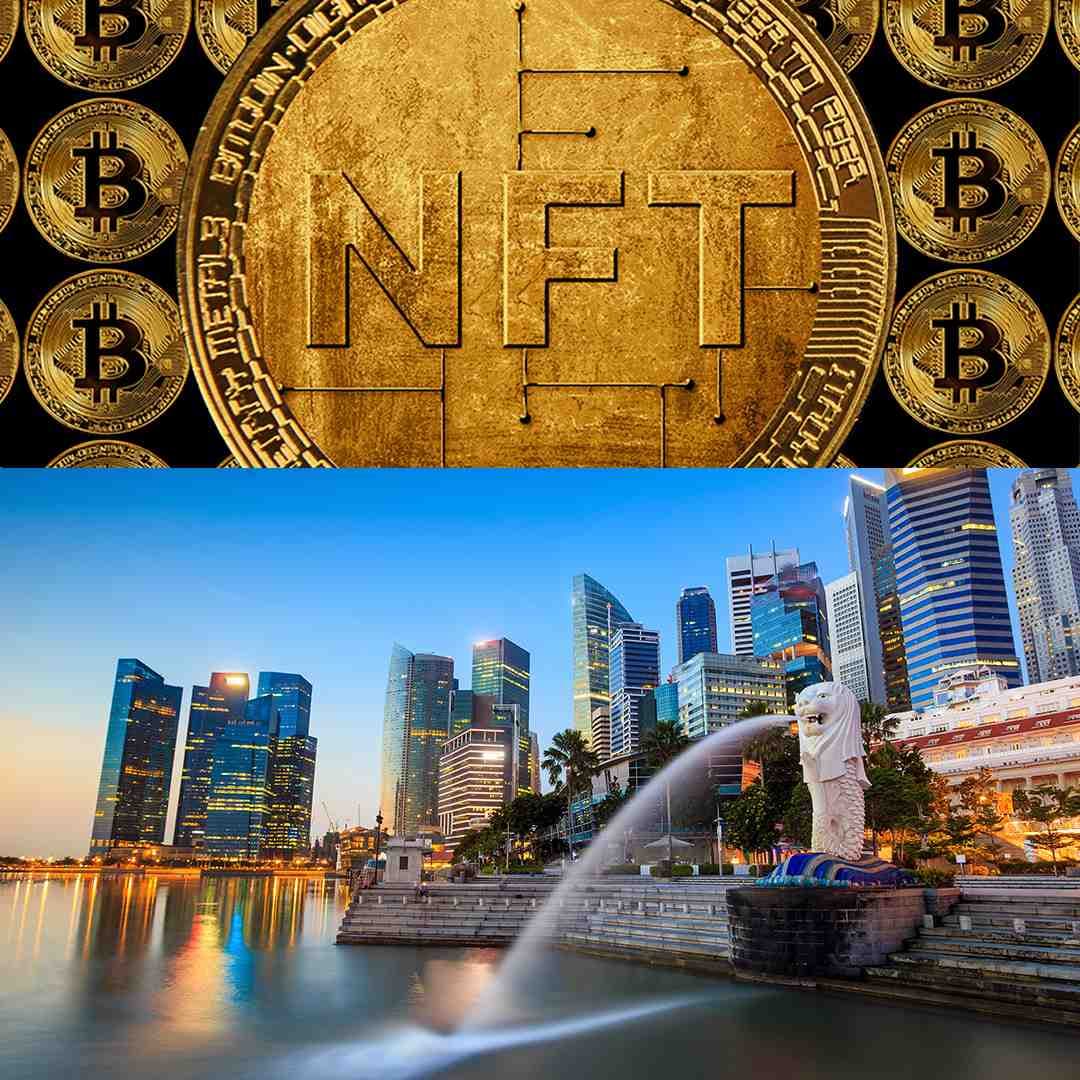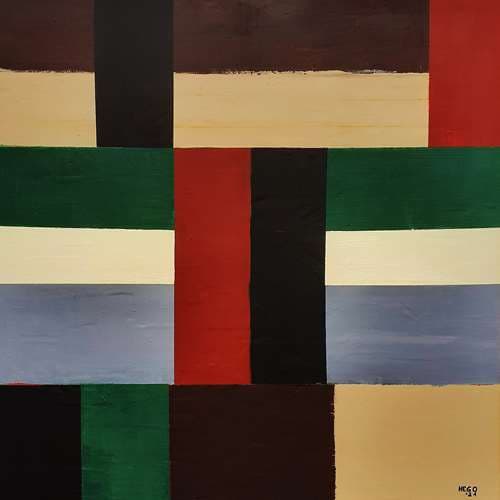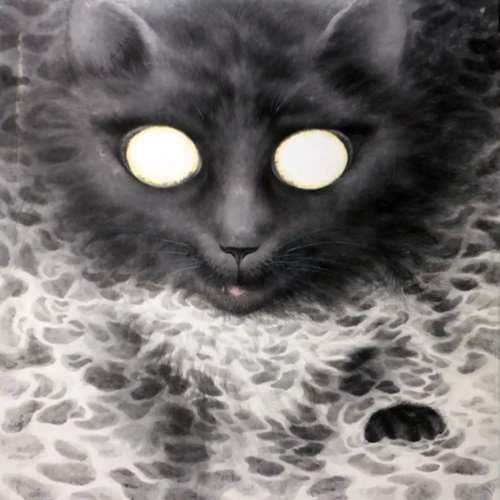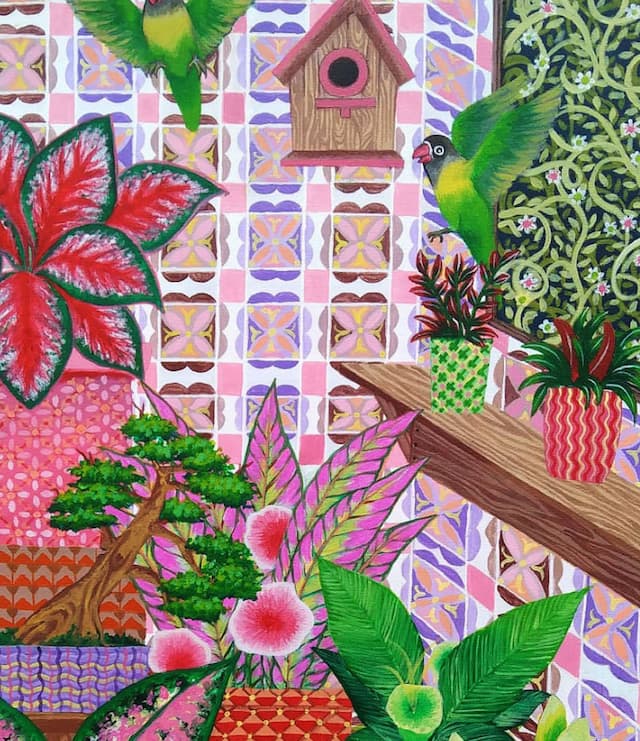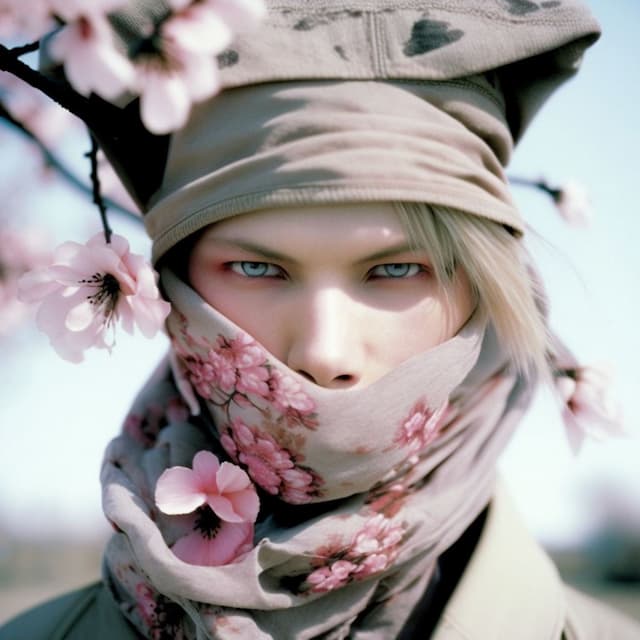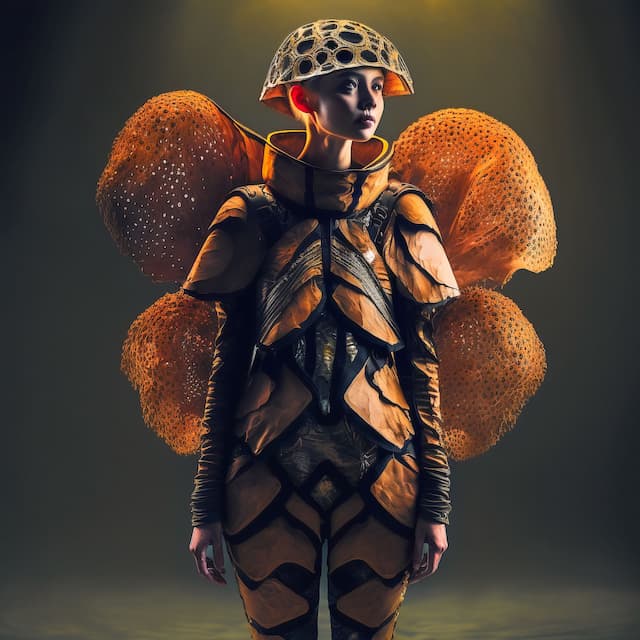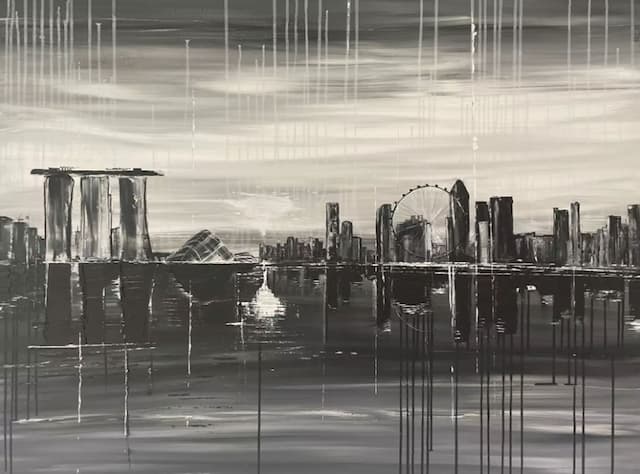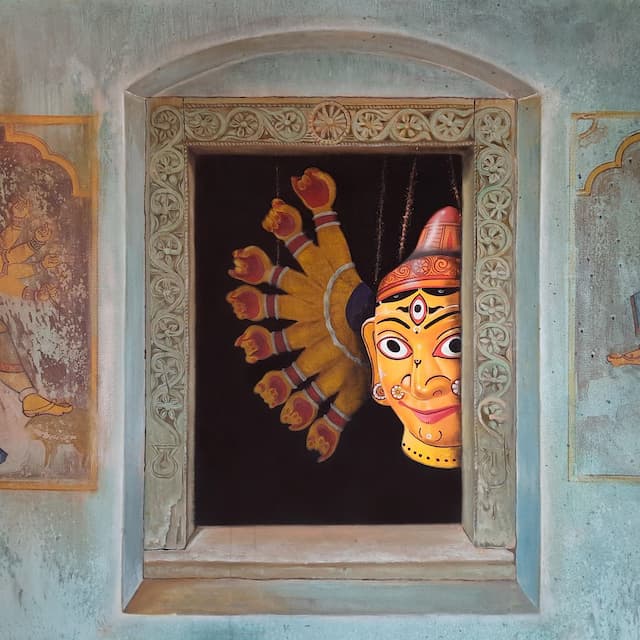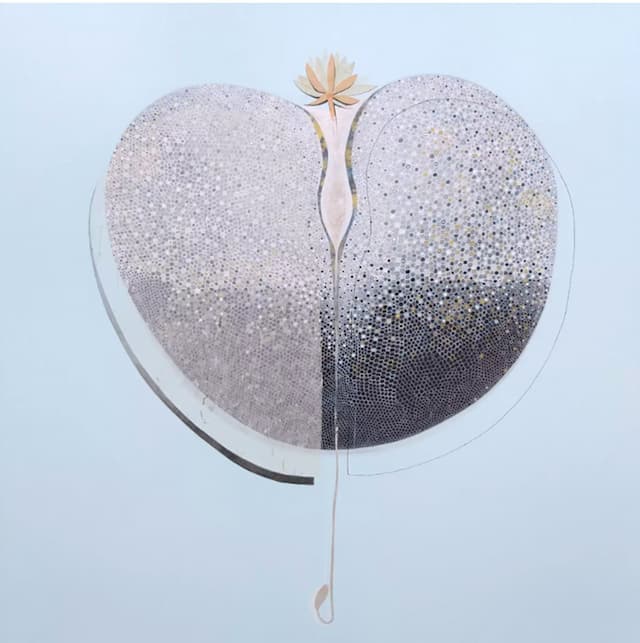Subscribe for our newsletter to have the latest stories and curated art recommendations delivered straight to your inbox
Singapore To Charge Income Tax on NFTs
RtistiQ
 Like
Like comments
comments SAVE
SAVELawrence Wong, Singapore's finance minister, announced today that "prevailing income tax rules will apply" to Income derived from non-fungible token (NFT) transactions.
He stated that the tax treatment and economics "will be determined based on the nature and use of the NFT."
According to Wong, some individuals may also derive capital gains from such transactions. Those profits won't be deducted because the country does not have a regime of taxing capital gains.
Different countries have been releasing Taxation plans for NFTs and Crypto Assets, including Australia, the United States of America, and India. The announcement has clarified the Taxation regime for NFT transactions treated as Income or Capital Gains to be considered under regular tax brackets in Singapore. On the other hand, India has taken a different approach with a proposed higher tax bracket of 30% for any Crypto and NFT transactions.
Blockchain-based NFTs serve as tokenized cryptographic assets to represent ownership of unique items. The acceptance of crypto is growing globally within the mainstream. Also, NFTs gained prominence from the end of 2020 and took a significant leap in 2021 with a transaction volume estimated at $41 Billion.
Singapore has one of the lowest income tax rates in Asia. The country offers several tax breaks and boasts a relatively lower corporate tax rate and top personal tax bracket, plus it does not levy taxes on capital gains. However, the country has plans to raise income taxes for the high earners.
Explore our Curated Collections
SIMILAR ARTICLES
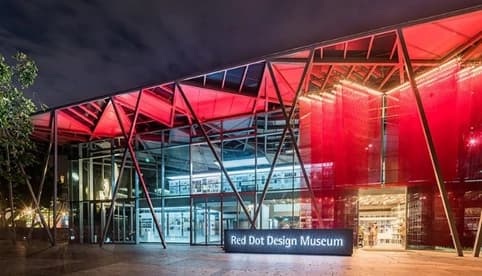
Exploring Art in Singapore
Today Singapore has emerged as one of the most happening artistic hubs attracting tourists and art lovers from across the world. The secret to this is in the nature of the burgeoning art scene in Singapore that encompasses a diverse range of artistic creations ranging from locally designed art to global contemporary art. Singapore's art scene continues to evolve and expand, making it an exciting destination for art lovers and a place where creativity and innovation thrive. Whether you're interested in traditional, contemporary, or street art, you're sure to find something that resonates with you in this dynamic city. Red Dot Museum To begin with, Singapore is reputed for its world class museums and galleries. Among this is the Red Dot Design Museum at Marina Bay which truly is in par with the trending world aesthetics. Designed as a glass building, it exhibits a great number of award-winning designs from over thirty countries. STPI Outside the confines of conventional fine art, there is Singapore Tyler Print Institute which has collaborated with established and emerging artist to create evocative pieces by experimenting in mediums of print and paper. STPI is an internationally well renowned creative workshop and art gallery in Singapore fostering a dynamic art hub. Interestingly, it blends engineering with art in a creative way. This can be seen for instance in Russel Qong’s ‘Lotus Dream’ which is a limited edition print made using mixed media, colour silk screen, lithography and gold leafing. Art and Science Museum Such confluence of art and science is also manifested in the Art and Science Museum at Marina Bay Sands. Futuristic in its approach, its exhibitions broaden the horizons of art and knowledge. For instance, one of its recent exhibitions, “Patricia Paccinini: We Are Connected” gives a fascinating exploration of what it means to be human in a world where biotechnology and genetic engineering is increasingly adopted. It makes one reflect on the ethical concerns around humankind’s abilities to create new life. When it was designed, its lotus flower-inspired architecture was intended to symbolize Singapore's transformation from a trading port known for its natural beauty into a global city focused on innovation and culture. However, the museum's most notable historical moment came in 2011 when it hosted "The Art of the Brick," a groundbreaking exhibition featuring the artwork of Nathan Sawaya entirely constructed from LEGO bricks. This display of creativity and engineering drew international attention and showcased the museum's commitment to blending art and science in unexpected and captivating ways, solidifying its reputation as a cutting-edge cultural institution. MINT Museum There are also museums that features quirky collections. The MINT Museum of Toy located on 26th Seah Street is Southeast Asia’s largest collection of rare and vintage toys spanning across different eras, cultures and themes. This stimulates a feeling of nostalgia as it features collections of old school toys based on famous characters like Astro boy, Popeye and Tintin. The MINT shop here retails replicas of vintage tin boys and traditional local games for one to take back as memorabilia. It was founded by Chang Yang Fa, a prominent businessman and toy collector. Chang's passion for collecting toys began in the 1980s when he started acquiring vintage toys and childhood memorabilia. Over the years, his collection grew significantly, and in 2007, he decided to share his treasures with the public by establishing the Mint Museum of Toys. What sets the Mint Museum apart is its exceptional collection of vintage toys and childhood artifacts spanning over a century, from the mid-19th century to the 1970s. The museum boasts an impressive array of more than 50,000 items, including rare and iconic toys, dolls, comics, and other collectibles from various countries. Visitors can explore the evolution of toys and childhood culture, providing a nostalgic journey through time. The Mint Museum of Toys not only showcases the historical significance of these artifacts but also celebrates their cultural and artistic value. It offers a unique opportunity to appreciate the craftsmanship and design of toys throughout history while reminiscing about one's own childhood memories. This one-of-a-kind museum in Singapore has become a beloved destination for toy enthusiasts, collectors, and anyone looking to experience the magic of nostalgia through the lens of play and creativity. Peranakan Museum There are also museums here dedicated to communities in Singapore that one could explore such as the Peranakan Museum. The Peranakan Museum in Singapore is a museum dedicated to the Peranakan culture, also known as the Straits Chinese or Baba-Nyonya culture, which is a unique hybrid culture that emerged from the intermarriage of Chinese immigrants and local Malays in the region. Officially opened in 2008 and is housed in a beautifully restored colonial-era building that was once the Tao Nan School, a Chinese-language school. The museum was established to showcase and celebrate the rich heritage and traditions of the Peranakan community in Southeast Asia. The museum specializes in preserving and presenting the artifacts, customs, and history of the Peranakan people, who played a significant role in the cultural mosaic of Singapore and the broader region. The museum houses an impressive collection of Peranakan artifacts, including traditional clothing, jewelry, ceramics, furniture, and religious objects. These items reflect the distinctive Peranakan aesthetics, which often feature intricate designs, vibrant colors, and a blend of Chinese and Malay influences. Visitors can engage with interactive exhibits that provide insights into Peranakan customs, rituals, and daily life. The museum offers a dynamic and immersive experience, allowing visitors to gain a deeper understanding of this unique culture. It frequently hosts cultural events, workshops, and performances, allowing visitors to participate in and appreciate the traditions, music, dance, and cuisine of the Peranakan community. The museum highlights the historical importance of the Peranakan culture in the development of Singapore and other Southeast Asian countries. It sheds light on how this distinct cultural group contributed to the region's diversity. Visit the Peranakan Museum website to learn more about recent and active events. Asian Civilization Museum Meanwhile, the multicultural heritage of Singapore is exhibited in the Asian Civilizations Museum housed in a historical building by the Singapore River. It holds artefacts from China, Southeast Asia, South Asia and West Asia all thematically organised. This shows the true essence of Singaporean civilization that has emerged over the past with the flow of people, ideas, belief systems and artistic traditions. Art Precincts Apart from Museums promoting Art and Culture of South-east Asia and Singapore, there are specific neighbourhoods with concentration of art galleries, studios, cultural institutions, and creative spaces. These precincts are known for their vibrant art scenes, making them ideal destinations for art enthusiasts and cultural explorers. The National Heritage Board of Singapore has been greatly responsible for managing these art precincts and spreading art and culture uniquely to each neightbourhood, thus telling the Story of Singapore, sharing the Singaporean experience and imparting Singapore spirit amongst the locals. Some of the most prominent Art precinct include Gillman Barracks: Located in the Bukit Timah area, Gillman Barracks is one of Singapore's most well-known art precincts. It's home to a cluster of contemporary art galleries, including both local and international names. The galleries often host exhibitions featuring a wide range of visual arts, from painting and sculpture to photography and new media. Bras Basah.Bugis: This historic district in the heart of Singapore is a cultural hub with a rich artistic heritage. It houses several museums, including the Singapore Art Museum and the National Museum of Singapore. You can explore traditional and contemporary art here, and the precinct also hosts art events and festivals. Tiong Bahru: While primarily known for its charming cafes and heritage architecture, Tiong Bahru has also seen an emergence of street art and murals in recent years. Exploring this neighborhood can lead you to various art installations adorning its streets and buildings. Haji Lane: Situated in the Kampong Glam area, Haji Lane is famous for its colorful and eclectic street art. This trendy street is lined with boutique shops, restaurants, and bars, making it a great place to soak up the artistic atmosphere while enjoying some shopping and dining. Little India: Known for its vibrant Indian culture, Little India also features a growing street art scene. The area hosts an annual "Aliwal Urban Art Festival," which showcases street art and live performances by local and international artists. Art in Singapore also lives in the wealth of street art and iconic wall murals. Tiong Bahru is one such hip places to explore in downtown Singapore. Here, one is greeted by the elaborate painted murals created by the upcoming contemporary artist Yip Yew Chong. His ‘Bird Singing Corner’ memorialises the old ‘Bird Corner’ where residents would bring their caged birds to hear them sing whilst admiring their prized avian pets. Bird Singing Corner by Yip Yew Chong Also popular among tourists is the wall art in China town at Banda street which pours out Singapore’s Chinese heritage through its mural paintings. This includes paintings ranging from fishermen and labourers to Samsui women who were female migrants from Sanshui district of china known for their iconic red headscarves. Here, the Singaporean Artist, Belinda Low’s pictorial depiction of Singapore from past and present is most encapsulating. One can also see several nostalgic paintings by YYC such as his most recent work, ‘Dreams of Chinatown’ (2021) which showcases some of the nostalgic sights of businesses in Chinatown back then. The list is endless. The Hindoo road in little India has a wall dedicated to the iconic Tamil film star, Rajnikanth painted by Muhamed Zukaernaean inspired by the former’s rags to riches stories. These art precincts in Singapore offer diverse experiences for art lovers, from exploring contemporary art galleries to discovering street art in unexpected places. Each area has its own unique charm and artistic identity, contributing to Singapore's vibrant cultural landscape.

How NFTs are Benefiting the Art Marketplace
Non-fungible tokens (NFTs) are certainly popular, and in the last year they have dominated art news headlines with tales of extravagant price tags. It’s a lot of heat and excitement, but just because NFTs are selling for a lot of money, does that really mean that they are good for the art marketplace? After all, there are plenty of items that sell at traditional auction houses for tens of millions of dollars, but very few artists and art lovers actually see any benefit from that kind of wealth being thrown around. But NFTs are different. They could very well reshape the way we think about buying and selling art, and they are overturning age-old expectations — in many ways for the better. Let’s look at some of the ways that NFTs are benefiting the art market. Greater Control for the Artists In the art market as we’ve known it, gallerists and art dealers have a lot of power. Their expertise and connections give them the ability to find buyers for artwork, and they can be especially helpful for artists just starting to break into higher prices. So what’s the problem with this system? Artists themselves rarely have the time to become experts in the art market or make the connections they need to move their art. That puts them at a power disadvantage. Even worse? There is almost a cultural stigma against artists diving into the pedestrian world of commerce. But NFTs allow certain new conditions for sales, conditions that artists can build into an NFT of their work. For instance, you can make an NFT of a digital work of art and guarantee that every time it is resold, the artist gets 10% of the price. What’s better, artists have access to the bidding information and the entire provenance of their work. That means they can see everyone who bought their artwork and how much they paid. This single change will revolutionize the artworld by leaps and bounds, helping artists to get more of the money their work generates. Greater Access for Art Lovers on Marketplaces On the other side of the coin are the art lovers. Many people want to buy art , but if you aren’t well connected, it can be hard to have access to everything that’s actually available out there. Of course, gallerists and auction houses and art dealers want to meet with and encourage every single art buyer. But the reality is that there is an emphasis on big time art buyers in the current art market. After all, if you are an art dealer with limited resources, are you going to focus on the tycoon you know who spends millions on art each year , or the middle income art lover just now wanting to buy? With NFTs, marketplaces are wide open. Auctions are available to everyone, and little if any information is reserved for a select few. This is letting more people leap into the world of art buying. That combined with the empowerment of artists means a lot more direct buying and selling of art. NFTs Are Changing When we think of NFTs in the artworld today, we predominantly think of auctions for blocks in a blockchain that are linked to digital files — like JPGs, MPEGs, GIFs, and so on. This has caused many to scratch their heads because when you purchase NFT arts for sale, you aren’t the only person with access to the art work. Anyone can still copy and share these files infinitely. But here is the thing: NFTs aren’t done evolving, not by a long shot. Remember when we talked about artists being able to use NFTs to get 10% of all future sales of their art? That’s what is called a smart contract. These are critical elements of NFTs, giving people the ability to have contract clauses automatically fulfilled when certain terms are met. And since NFTs copy the provenance of an artwork in a safe and secure way, they take the burden of provenance off of both the artist and the art buyer. Put these two things together, and you can see how NFTs won’t just become interlinked with the digital art market. They can also become critical features of the physical art market. As NFTs grow and change, we will see the art market shifting along with them. We are standing at the precipice of a major development in the art world. NFTs are going to be a core piece of this change.
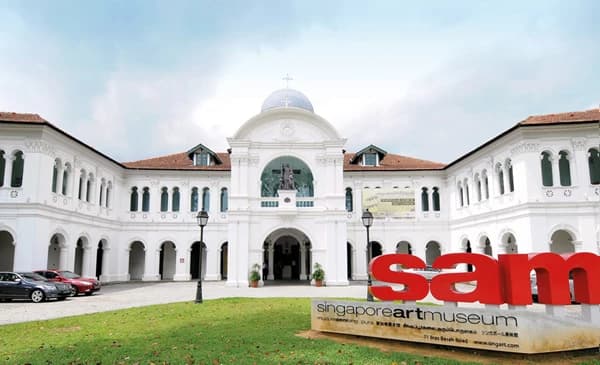
SINGAPORE AND ITS BOOMING ART SCENE
Over the recent years, the growing art scene in Singapore has gathered much attention across the globe. Singapore has bloomed from just being an important financial hub to also a center of art and culture. For anyone looking to explore this booming art scene in Singapore, the various art museums and galleries in the island is just the right place to visit. The Singapore Art Museum (SAM) Location - 39 Keppel Rd, #01-02 Tanjong Pagar Distripark, Singapore 089065 Entirely dedicated to contemporary art, the Singapore Art Museum holds an exquisite collection of artistic works by some of the best local southeast and East Asian artists. While creating a lively art experience for all, it has also organized a variety of exciting art events such as the Singapore Biennale and the Singapore Art Week which also included live art performances, art tours, workshops, etc. It has opened up multiple venues for exhibiting art. Apart from the two heritage buildings, the former St. Joseph’s Institution and the former Catholic Street, the most recent addition is the one in Tanjong Pagar Distripark. The National Gallery Singapore Location – 1 St Andrew's Rd, Singapore 178957 The largest museum of Singaporean and Southeast Asian modern Art, it is sheltered in the two iconic Singapore buildings – the Supreme court building and the City hall. These two monuments are itself great works of art built during the colonial times in Singapore. Today, it is home to some of the best collection of modern Singapore and southeast Asian art including the works of prominent local artists like Georgette Chen, Che Chong Swee and Liu Kang as well as by leading artists from both southeast Asia and the rest of the globe such as Raden Saleh from Indonesia and Latiff Mohidin from Malaysia. The exhibitions in many ways expresses the essence of Singaporean art and heritage. There is also the Keppel Centre for Art Education here which is Singapore’s first foremost art education center that fosters an environment of learning and exploration for youths, children and families. The Art House Location – 1 Old Parliament Ln, Singapore 179429 The art house was first established as the Old Parliament House Limited but it was later was renamed as the Arts House Limited on 19 March 2014. It strives to build up a rich community life by connecting through the diverse artistic productions in Singapore. It hosts art activities and exhibitions on a regular basis facilitating interactions among artists and lovers of art. Gillman Barracks Location – 9 Lock Rd, Singapore 108937 While Gillman Barracks today constitutes a space dedicated to creative art, originally, it was a building constructed in 1936 as army barracks for the British’s 1st Battalion. It was named after General Sir Webb Gillman. In 2012, it was transformed into a space for housing some of the leading art galleries while retaining the main colonial architectural designs. This includes the ShanghART Singapore and Sundaram Tagore Gallery. Today, it exhibits a wide array of top contemporary art from different parts of the globe. Within the same structure is the NTU Centre for Contemporary Art (CCA) Singapore which is a research center that encourages experimentation with contemporary art. Goodman Arts Centre Location – 90 Goodman Rd, Singapore 439053 Established in 2011, the Goodman Arts Centre aims to build a lively space for art lovers to interact and experience different art forms such as fine art, dance, theatre and poetry. It is known for organizing some of the most thought provoking and exciting workshops and performances that reaches out to a diverse audience. Ranging from ceramic arts to cultural dance, there is something for everyone in Goodman Arts Centre. Collectors Contemporary Location – Petro Centre, 5 Jalan Kilang Barat, Singapore Collectors Contemporary brings to the fore innovative artistic productions from across the globe in a single platform; also providing an opportunity for art lovers to own some of these contemporary art works. Its selection of exhibits encompasses extraordinary modern and contemporary artwork of high quality. Famous for housing the largest collection of artworks by the famous icon, Andy Warhol, it also regularly arranges educational events and programs for art students with professional artists thereby creating a space of learning. NUS Museum Location – University Cultural Centre, Singapore Unlike other art museums, the NUS museum is actually a university museum set up to encourage cultural artistic life within the university. To enrich the learning experience, it organizes exhibitions, workshops, film screenings and public programs which is carefully curated. It consists of nine galleries which are mostly focused on presenting Southeast Asian art and culture. This includes four permanent collections – the south and Southeast Asian Collection, the Lee Kong Chian Collection, the Ng Eng Teng Collection and the Straits Chinese Collection. The Parkview Museum Location - L3, Parkview Square 600 North Bridge Road, Singapore The main highlight of the Parkview Museum established by the Parkview Group is Italian contemporary art and is famous for holding the largest Salvador Dali collection outside Spain. It however also figures as an important space that encourages the growth of the local art scene. This organizes solo shows and theme-based exhibitions mostly focused on architectural design and traditional art and culture.
ARTICLES ON ART MARKET
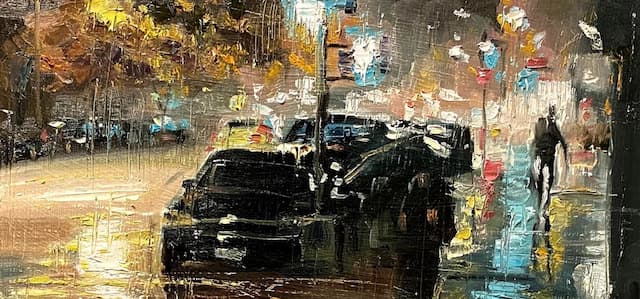
ART MARKET
The Evolution of Landscape or Scenery Painting: A Journey Through Different Periods
Scenery painting, particularly landscape painting, has been a cherished art form for centuries. It offers a window into the natural world, showcasing the evolution of artistic styles, techniques, and mediums across different historical periods. This article takes you on a journey through time, exploring the development of scenery painting and the major creators who left their indelible marks on this genre. From the early depictions of the natural world to modern interpretations, the evolution of scenery painting reveals not only artistic innovation but also the shifting perceptions of nature and its significance in the human experience. Prehistoric and Ancient Art: The Birth of Scenery Painting The earliest examples of scenery painting can be traced back to prehistoric times. These paintings, often found in caves, depict scenes of the natural world inhabited by early humans. These ancient artworks serve as a testament to the human urge to document their surroundings and reflect on the world around them. One of the most famous prehistoric scenery paintings is the Lascaux cave paintings in France, dating back to around 15,000 BCE. These paintings, which include depictions of animals and the surrounding environment, give us a glimpse into the artistic sensibilities of early humans and their connection to nature. As civilization advanced, so did the art of scenery painting. In ancient Greece, artists like Apollodorus and Zeuxis created scenic backgrounds for theatrical performances, a practice that would later influence the development of landscape painting in Western art. The Middle Ages: An Age of Symbolism During the Middle Ages, landscape painting was often subordinated to religious and symbolic themes. It served as a backdrop for religious narratives and was intended to convey spiritual meaning rather than to celebrate the beauty of nature itself. One of the significant developments during this period was the inclusion of landscapes in religious art, particularly in illuminated manuscripts and altar paintings. The landscapes were used as settings for biblical events and served to provide context to the religious narratives. Notable creators of this period include artists like Hieronymus Bosch, who painted landscapes that were rich in symbolism and surrealism. His works, such as "The Garden of Earthly Delights," feature landscapes that are intricate and fantastical, reflecting the religious and moral concerns of the time. The Renaissance: Nature as the Divine The Renaissance period witnessed a significant shift in the way nature was perceived and depicted in art. Artists during this time began to explore the idea of nature as a reflection of the divine, and landscape painting evolved to become an independent genre. Leonardo da Vinci, one of the most celebrated figures of the Renaissance, demonstrated a keen interest in the study of nature. His detailed sketches of landscapes and natural phenomena, such as his "Bird's-Eye View of a Landscape," show a deep appreciation for the beauty and complexity of the natural world. Albrecht Dürer, a German artist, made substantial contributions to the genre with his detailed engravings and woodcuts of landscapes. His works, such as "The Large Piece of Turf," displayed a meticulous observation of plant life and a desire to represent nature as realistically as possible. The Dutch Golden Age: Realism and Symbolism The Dutch Golden Age in the 17th century saw the emergence of landscape painting as a prominent genre. Dutch artists, such as Jacob van Ruisdael and Aelbert Cuyp, played pivotal roles in elevating the status of landscape painting, often depicting the serene and idyllic Dutch countryside. Landscape painting during this period embraced both realism and symbolism. Realistic depictions of the Dutch landscape and the daily life of its inhabitants became a hallmark of Dutch Golden Age art. Artists focused on capturing the effects of light, atmosphere, and weather conditions in their landscapes. Aelbert Cuyp, for example, was known for his warm, golden landscapes bathed in sunlight, often featuring cattle and river scenes. His "The Maas at Dordrecht" is a prime example of the Dutch Golden Age landscape, displaying a tranquil, idyllic scene with a masterful use of light and shadow. Jacob van Ruisdael, on the other hand, painted landscapes with dramatic weather and atmospheric conditions. His work "View of Haarlem with Bleaching Grounds" exemplifies his skill in capturing the shifting moods of nature. The Romantic Period: Nature as a Source of Inspiration The Romantic period in the late 18th and early 19th centuries saw a resurgence of interest in nature, not only as a subject but as a source of inspiration for artists. Nature was seen as a powerful force that could evoke deep emotions and serve as a reflection of the human condition. Artists like Caspar David Friedrich, known for his transcendental landscapes, painted scenes that often featured solitary figures in sublime natural settings. His "Wanderer above the Sea of Fog" is an iconic work of Romantic landscape painting, where a lone figure stands on a mountain peak, gazing out at a mist-covered landscape. The Romantic landscape painters often used dramatic and awe-inspiring landscapes to evoke feelings of awe and wonder. This period marked a departure from the strict realism of the Dutch Golden Age, allowing for more emotional and imaginative interpretations of the natural world. The Barbizon School: Pioneers of Plain Air Painting In the 19th century, the Barbizon School in France had a profound impact on the evolution of landscape painting. Artists of this movement, such as Jean-Baptiste Camille Corot and Jean-François Millet, rejected idealized or romanticized depictions of the landscape in favor of a more direct and realistic approach. The Barbizon artists often worked en plein air, or outdoors, to capture the true essence of nature. They sought to convey the simple beauty of the countryside and the daily lives of rural people. Jean-François Millet's "The Gleaners" is a prime example of this approach, depicting three peasant women harvesting grain in a realistic and unidealized manner. The Barbizon School laid the groundwork for the emergence of the Impressionist movement, which would further revolutionize landscape painting. Impressionism: Capturing the Moment Impressionism, which emerged in the late 19th century, was a groundbreaking movement that redefined how landscapes were painted. Artists like Claude Monet, Pierre-Auguste Renoir, and Camille Pissarro sought to capture the fleeting effects of light and color in the natural world. Claude Monet's "Water Lilies" series is a quintessential example of Impressionist landscape painting. Monet's fascination with the play of light on the water's surface and the changing colors of his garden pond led to a series of paintings that emphasized the transitory nature of the scene. The Impressionists were known for their loose brushwork and the use of broken color to create the illusion of light and atmosphere. They painted en plein air, embracing the spontaneity of nature and the changing conditions of the outdoors. Post-Impressionism: Individual Interpretations Following Impressionism, the Post-Impressionist movement brought forth a diverse range of artistic interpretations. Artists like Vincent van Gogh and Paul Cézanne built upon the Impressionist foundation but sought to imbue their landscapes with personal and emotional elements. Vincent van Gogh's "Starry Night" is a prime example of his unique approach to landscape painting. The swirling, starry night sky and the serene village
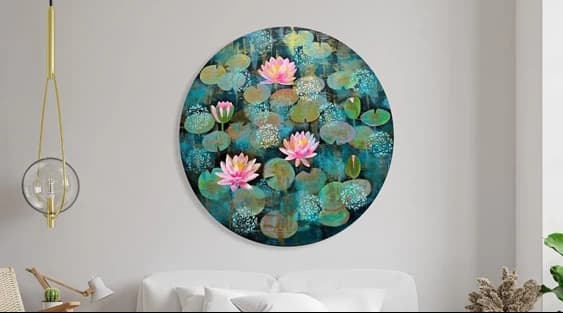
ART MARKET
The Ultimate Guide to Finding the Perfect Art Wall Paintings for Sale
Are you searching for the perfect art wall paintings to elevate your home decor? Look no further! Our ultimate guide has everything you need to know to find that one-of-a-kind masterpiece that will add a touch of sophistication to your living space. We understand that choosing the right wall painting can feel overwhelming with the plethora of options available in the market. That's why we've curated this comprehensive guide to simplify your decision-making process. From understanding different painting styles to selecting the right size and color scheme, our guide covers it all. We'll even walk you through the process of determining your personal taste and aligning it with the atmosphere you want to create in your home. Whether you're a seasoned art enthusiast or a first-time buyer, this guide is designed to help you find the perfect art wall paintings that resonate with your personality. So, get ready to transform your living space into a mesmerizing art gallery with our expert tips and advice. Benefits of incorporating art wall paintings in your home or office Art wall paintings have the power to transform any space, be it your home or office. They serve as a visual expression of your personality, adding depth and character to the walls. One of the key benefits of incorporating art wall paintings is their ability to create a focal point in a room. A well-placed painting can draw the eye and become a conversation starter. It can also help to tie together the various elements of your decor, creating a cohesive and aesthetically pleasing environment. In addition to their decorative value, art wall paintings can also have a positive impact on your mood and well-being. Studies have shown that engaging with art can reduce stress and anxiety, increase feelings of happiness, and even improve cognitive function. By surrounding yourself with artwork that resonates with you, you can create a space that promotes relaxation and creativity. Different types of art wall paintings When it comes to art wall paintings, there is a wide range of styles and genres to choose from. Understanding the different types can help you narrow down your options and find the perfect piece that suits your taste and home decor. One popular style of art wall paintings is abstract art. Abstract paintings are characterized by their non-representational forms and use of color, line, and shape to create a visual language. They can add a sense of energy and intrigue to a space, and their versatility makes them suitable for a variety of interior design styles. For those who prefer a more traditional approach, landscape paintings are a timeless choice. These paintings often depict natural scenery, such as mountains, forests, or seascapes. Landscape paintings can create a sense of tranquility and bring the beauty of the outdoors into your home. Another popular genre is portrait painting. Portraits capture the likeness and personality of a person, making them a great choice for adding a personal touch to your space. Whether you opt for a classic portrait or a contemporary interpretation, these paintings can make a bold statement and become a focal point in any room. Factors to consider when choosing art wall paintings Choosing the perfect art wall painting involves considering several factors that will help you make an informed decision. By taking these factors into account, you can ensure that the painting you choose not only fits your personal taste but also complements your existing decor. One of the first things to consider is the size of the painting. The size of the artwork should be proportional to the wall it will be displayed on. A large painting on a small wall can overwhelm the space, while a small painting on a large wall may get lost and fail to make an impact. Take measurements of your wall and consider the scale of the room to determine the appropriate size for your painting. Another important factor is the color scheme of the painting. The colors should harmonize with the overall color palette of the room. Consider the dominant colors in your decor and look for paintings that incorporate similar hues. This will help create a cohesive and visually pleasing environment. The subject matter of the painting is also a crucial consideration. Think about the atmosphere you want to create in the room. Do you want a serene and calming space? In that case, landscape or abstract paintings may be a good choice. If you want to make a bold statement or showcase your personality, consider opting for a painting with a strong subject or vibrant colors. Lastly, don't forget to consider your personal taste and emotional connection to the artwork. Art is subjective, and what resonates with one person may not resonate with another. Choose a painting that speaks to you on a deeper level, evokes emotions, and reflects your unique style and personality. Where to find art wall paintings for sale Now that you have a clear idea of the type of art wall painting you're looking for, it's time to explore the various avenues where you can find them for sale. From online marketplaces to art galleries and local artists, each option offers its own advantages and unique selection of artwork. Online marketplaces have become a popular destination for art buyers. Websites like RtistiQ, Saatchi Art, and Artsy connect artists with buyers from all over the world. These platforms offer a wide range of art wall paintings in different styles, sizes, and price ranges. They often have search filters that allow you to narrow down your options based on your preferences, making it easier to find the perfect piece. Art galleries and exhibitions are another great place to find art wall paintings. Visiting galleries allows you to see the artwork in person and get a better sense of its size, texture, and overall impact. Many galleries also represent emerging artists, giving you the opportunity to discover unique and undiscovered talent. If you're looking for something truly one-of-a-kind, consider reaching out to local artists or independent sellers. Many artists have their own websites or social media platforms where they showcase and sell their work. Buying directly from the artist not only supports their creative journey but also allows you to establish a personal connection and learn more about the inspiration behind the painting. No matter where you choose to buy your art wall painting, it's important to do your research and ensure that the seller is reputable. Read reviews, check their return policy, and ask any questions you may have before making a purchase. Investing in art is a personal experience, and finding the right seller can make all the difference. Tips for selecting the perfect art wall painting Now that you know where to find art wall paintings, let's delve into some expert tips for selecting the perfect piece that will enhance your home decor and bring joy to your space. Research and Explore: Take the time to research different artists, styles, and genres. Look for inspiration in magazines, art blogs, and social media platforms. Visit museums and galleries to get a better understanding of what resonates with you. Consider the Space: Before making a purchase, visualize how the painting will fit into your space. Consider the lighting, furniture arrangement, and overall ambiance of the room. Take into account the size, color, and subject matter of the painting to ensure it complements the space. Set a Budget: Art wall paintings can vary greatly in price, so it's important to set a budget before you start your search. Determine how much you're willing to spend and stick to it. Remember that art is an investment, and finding a piece you love within your budget is possible. Ask for Expert Advice: If you're unsure about the technical aspects of a painting or need guidance in making a decision, don't hesitate to seek expert advice. Consult with art consultants, interior designers, or even the artists themselves. They can offer valuable insights and help you make an informed choice. Trust Your Instincts: Ultimately, trust your instincts and choose a painting that speaks to you. Art is meant to evoke emotions and create a personal connection. If a painting resonates with you on an emotional level and brings you joy, it's likely the perfect choice for your home. By following these tips, you can navigate the world of art wall paintings with confidence and find the perfect piece that will enhance your living space for years to come. Conclusion Finding the perfect art wall painting may seem like a daunting task, but with the right knowledge and guidance, it can be an enjoyable and rewarding experience. By understanding different painting styles, considering important factors such as size and color scheme, and exploring various avenues for purchasing art, you can find a piece that truly reflects your personality and elevates your home decor. Remember that art is subjective, and what matters most is finding a painting that resonates with you on a deeper level. Trust your instincts, explore different options, and take the time to appreciate the beauty and creativity that art wall paintings bring to your living space. So, start your journey today! Transform your walls into a mesmerizing art gallery and create a space that not only inspires but also reflects your unique style and personality. Happy art hunting!

ART MARKET
Unveiling Limited Edition Prints: Are They Worth Collecting?
In the world of art, limited edition prints have garnered significant attention and debate over their value and worth. These prints, often produced by artists in limited quantities, have become popular for art enthusiasts to own a piece of their favourite works without breaking the bank. However, the question remains: are limited edition prints worth anything as an investment and a source of aesthetic pleasure? The reality is that Prints can be just as valuable as any other artwork created and have exceeded value in millions for some rare works by master artists. The Frugal Repast (Le Repas frugal), an etching by Pablo Picasso part of the La Suite des saltimbanques series created in 1904, is considered the first significant attempt by the artist in Printmaking, sold for GBP 6,014,500, in the year 2022 at christies. This article delves into the various facets of limited edition prints, exploring their history, factors affecting their value, and whether they hold lasting significance in the art market. The History of Limited Edition Prints Limited edition prints trace their origins back to the earliest forms of printmaking. Printmaking, as a technique, dates back to ancient civilizations such as the Egyptians and Chinese. However, producing prints in limited quantities gained traction during the Renaissance period in Europe. Artists like Albrecht Dürer and Rembrandt created engravings and etchings that were not only artistic masterpieces but also showed a shift in how art could be produced and distributed. Fast-forward to the 20th century, and limited edition prints began gaining prominence. Artists like Pablo Picasso, Salvador Dalí, and Andy Warhol embraced printmaking to make their art accessible to a broader audience. The Indian Master Raja Ravi Varma, gained large scale prominence due to lithographic prints, specifically of Gods and Godesses that he paiinted. The ability to reproduce artworks precisely and at a lower cost than original paintings made prints an attractive medium for artists and collectors. Factors Affecting the Value of Limited Edition Prints A complex interplay of factors influences the value of limited-edition prints. Here are some key aspects that contribute to their worth: Edition Size: One of the defining features of limited edition prints is the restricted number of copies produced. Generally, the smaller the edition size, the higher the perceived value. A print from an edition of 10 will likely hold more value than one from 100. Artist's Reputation: The artist's reputation plays a significant role in determining the value of their limited edition prints. Prints by renowned artists with established careers are more likely to appreciate value over time. Authenticity and Provenance: Authenticity is crucial in the art market. Limited edition prints with proper documentation and provenance are more valuable as they assure buyers of the artwork's legitimacy. Condition: The condition of the print also impacts its value. Well-preserved prints, without damage or discolouration, tend to command higher prices. Rarity: While the term "limited edition" implies rarity, some prints within an edition might be more sought after due to factors such as variations in colour or unique characteristics. Subject Matter: The subject of the print and its relevance to the artist's body of work can affect its value. Prints featuring iconic motifs or themes closely associated with the artist will likely be more valuable. Artistic Technique: The printmaking technique used can influence value. Specific techniques like etching, lithography, and serigraphy (silkscreen printing) require intricate skills and can add to the appeal and value of the print. Market Demand: Market trends and demand play a significant role in determining the value of limited edition prints. If a particular artist's work becomes fashionable or is featured in exhibitions, it can increase demand and higher prices. Limited Edition Prints as Investments Limited edition prints have often been seen as a way for collectors to invest in art without the hefty price tag of an original painting. However, the investment potential of these prints is a subject of debate. While some limited edition prints by highly regarded artists have appreciated significantly in value over time, not all prints yield substantial returns. The art market can be unpredictable, and factors such as shifts in artistic taste, economic conditions, and changes in the artist's popularity can impact the investment value of prints. Investing in limited edition prints requires careful research and consideration. It's essential to research the artist's career trajectory, study market trends, and consult experts before purchasing with the expectation of financial gain. Like any investment, risks are involved, and it's important not to rely solely on limited edition prints as a means of financial growth. Aesthetic Value and Enjoyment Beyond the realm of investment, limited edition prints hold intrinsic value in terms of aesthetics and personal enjoyment. Owning a limited edition print allows art enthusiasts to experience the beauty and creativity of an artist's work firsthand. These prints can serve as entry points into an artist's larger body of work, allowing viewers to connect with their artistic vision and style. Limited edition prints also allow individuals to decorate their living or working spaces with art that resonates with them. The affordability of prints compared to original artworks makes it possible for a broader range of people to own pieces that align with their artistic preferences. The Changing Landscape with Digital Art Digital technology has introduced a new dimension to the world of limited edition prints through the emergence of digital art and NFTs (Non-Fungible Tokens). NFTs allow digital artists to create limited edition digital artworks that are unique, provably authentic, and can be bought, sold, and owned on blockchain platforms. This raises questions about the value of traditional limited-edition prints in a world where digital art is gaining prominence. While digital art and NFTs have their own merits and challenges, traditional limited-edition prints continue to hold their place in the art market. The tactile quality of a physical print, the historical significance of printmaking techniques, and the enduring appeal of owning a tangible piece of art contribute to the lasting value of traditional limited edition prints. In Conclusion Whether limited edition prints are worth anything encompasses a multifaceted discussion. While these prints may not always yield substantial financial returns as investments, their value extends far beyond monetary considerations. Limited edition prints allow art enthusiasts to engage with the creative output of talented artists, enriching their lives aesthetically and emotionally. As the art market continues to evolve, limited edition prints remain an accessible and valuable means of connecting with art. Whether cherished for their aesthetic allure or sought after as collectibles, these prints are a testament to the enduring power of art to inspire, provoke, and delight.
